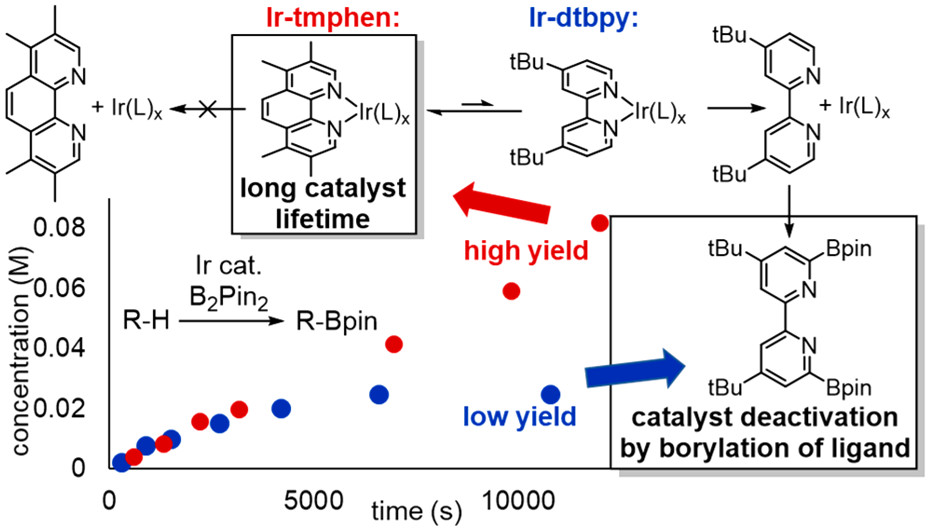Origin of the Difference in Reactivity between Ir Catalysts for the Borylation of C-H Bonds
J. Am. Chem. Soc., 2019, 141 (16479-16485)
View on publisher site
Abstract
A mechanistic study on the origin of the difference in reactivity between Ir catalysts for C–H borylation reactions is reported. Catalytic reactions of B2pin2 with a series of substrates that require high temperatures and long reaction times were conducted. These reactions catalyzed by the combination of [Ir(COD)(OMe)]2 and 3,4,7,8-tetramethylphenanthroline (tmphen) occur in yields that are substantially higher than those of reactions catalyzed by [Ir(COD)(OMe)]2 and 4,4′-di-tert-butylbipyridine (dtbpy). The electronic properties of Ir catalysts ligated by dtbpy or tmphen and their stoichiometric reactivity were investigated. It was found that a longer lifetime rather than higher reactivity of the catalyst leads to higher yields of reactions catalyzed by Ir-tmphen. The catalyst ligated by dtbpy decomposes principally by dissociation of the ligand and rapid borylation at the positions alpha to nitrogen. Thus, the greater stability of the catalyst containing tmphen results from its greater binding constant.
Read on publisher's site